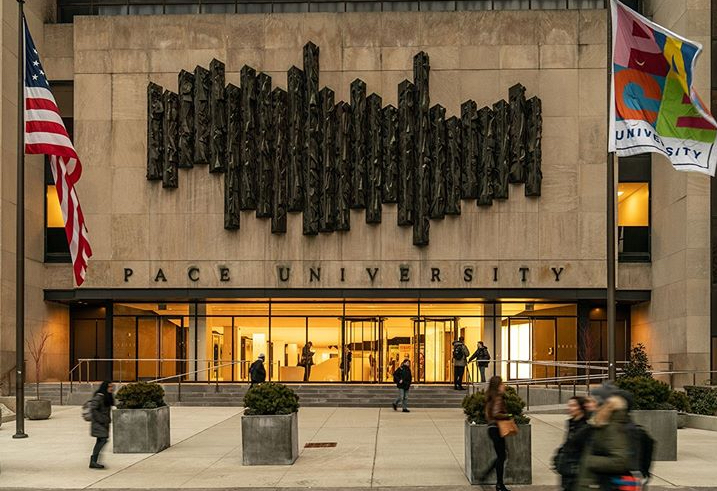University unveils guidelines for fall 2020 semester
June 25, 2020
On June 23, the University announced it will open all three campuses for in-person, online and hybrid classes on Aug. 24. The announcement was followed by guidelines that students, staff and faculty will be required to follow.
In accordance with New York’s “NY Forward” reopening phases, the University clarified how the semester will move forward.
Faculty and staff members are able to return to campus on Aug. 10 following the 25% overall occupancy goal. The staff will be faced with a mix of working remotely, reduced staffing and staggered hours. As for residential students, move-in begins on Aug. 14.
Although the fall semester typically ends in late December, in-person learning will conclude on Nov. 25. Thanksgiving break will act as the start of remote learning where students will complete final exams remotely until the official end of the semester on Dec. 6. The University plans to remain open for all other fall holidays and instead recommends classes be held asynchronously.
Online training is required for all students, staff and faculty as well as an education module prior to the first day of classes. More information regarding training will be available in the coming weeks.
COVID-19 testing is not required, but is recommended 14 days prior to returning to campus. Your results do not need to be shared with the University unless you test positive.
Additionally, completing a screening questionnaire for seven consecutive days is mandatory to be permitted back on campus. The questionnaire will be made available through a mobile app and will have questions such as:
- Are you experiencing any symptoms?
- Are you experiencing symptoms not related to allergies?
- Are you experiencing any emergency symptoms?
- Have you been in close contact with someone who has tested positive for or has had symptoms in the past 14 days?
A University student who wishes to remain anonymous said, “I don’t know how efficient a “daily COVID survey” will actually be. It sounds like an appeasing move because in reality, reading results from every student and staff member daily will be a challenge that I don’t really have the faith in the administration to execute proficiently. Not to mention, people could easily lie.”
The University has also implemented a “Coronavirus Coordination Officer” who will be a contact for students, staff and faculty. Until that officer is appointed, the directors of University Health Care will be responsible for the following: managing testing, contract tracing, response efforts and coordinating with public health officials. The officer will mainly work with New York State and local government for contact tracing as well as decide what steps to take if a confirmed positive case occurs on campus.
Face coverings must be worn on campus in all common areas, but they are not a substitute for social distancing. The University will provide reusable cloth face coverings to all those on campus. Approved face coverings include cloth (homemade sewn, quick cut, bandana), surgical masks and face shields. Face coverings must properly fit under your chin and cover your nose.
The University’s facilities team will provide sufficient supplies including hand sanitizer, paper towels and disinfectant wipes. The announcement states the team will “clean all high-touch surfaces (i.e. doorknobs, faucets, railings, light switches, elevator buttons) at least twice a day. A sanitation process of all station counters and high touch surfaces in dining areas will be cleaned every 30 minutes.”
“They will also adjust the mechanical infrastructure to increase fresh air flow, adding efficient filtration, utilizing UV-C technology to combat infectious particles and controlling temperature and humidity.”
Reducing capacity in common areas, classrooms, residence halls and offices will also take place when possible and some temporary partitions and barriers will be installed. Occupancy will be capped at 25% or 50% depending on the space to enforce social distancing. Labs and studio spaces have maxed occupancy at 50%.
As students have already registered for classes that are now full, some are worried about how this will affect their learning experience.
University junior Maeve Casey said, “I think the guidelines are definitely necessary to keep everyone safe and healthy. Still, I’m a little confused about how the classes will work because the statement mentioned they’ll be hybrid or online and I’m worried since I already registered.”
The anonymous student said, “I really worry about all of my acting classes. At least it’s a step up from zoom acting class, but acting six feet apart and with masks covering half our faces is a substantial challenge.”
“It feels like a sick joke that Pace has increased the PPA fee and tuition for what they know will be a hindered educational experience. They won’t even tell us what the fee is being used for. We have a petition going around and we’ve been asking them daily and they’ve yet to give us a direct answer. The responsible thing to do would be to reduce tuition,” they added.
University freshman Emma H. started a petition on change.org that calls on the University to lower tuition for the upcoming school year. The description reads, “The quality of learning in online classes/hybrid classes is drastically reduced compared to in-person instruction. Pace University has decided to charge full tuition for the 2020-2021 academic year, despite the many financial hardships its students have gone through with the COVID-19 pandemic.”
It continues, “Full tuition should be charged for regular and complete instruction, not online instruction. This is ridiculous and completely insensitive to so many students who struggle financially during this global health crisis right now. Pace University needs to reduce their students’ tuition for the 2020-2021 academic year.”
Additionally, common areas including hallways, stairwells, elevators, lounges and offices will have signage to enforce social distancing. Another step taken will be directional traffic flow for one-way stairwells, hallways, in-room environment, entrances and exits. The gym and fitness areas will be closed until further notice.
While residence halls have already announced their plan to cut back on capacity, more information regarding fall move-in and move-out process guidelines will be released soon.
“I live in a residence hall so I’m especially concerned about how the whole laundry room/common areas/gym situation will work out. I get that gyms need to be closed for health reasons but also that’s a big part of my mental health so I’m hoping they reopen before school starts,” said Casey.
Dining halls will reduce capacity to 50% with limited seating and mobile ordering or pick-up as an option, while self-service food stations will be closed. Contactless payment will also be enforced where possible.
“I’m also worried about how Chartwells is going to adapt. I remember the second semester before we closed, the vegan options were exclusively fried noodles daily. With the closure of the self-serve stations, Chartwells and Pace by extension have to up their game or there’s going to be a lot of angry people with dietary restrictions,” said the anonymous student.
Elevators must not exceed 50% capacity and it is recommended to use a pen or piece of clothing to press buttons. The University also recommends allowing extra time to get to class due to the limited space.
Restroom use must be “based on the ability to maintain at least six feet distance between individuals. Smaller bathrooms with limited space will be marked with signage and occupied by only one individual at a time,” said the announcement. “In accordance with guidance from local health authorities, it’s important to follow all posted signage near sink areas–some will be specified for handwashing, dishwashing or oral hygiene.”
If the University decides to allow outside individuals onto campus for events that include lectures, conferences and athletic events, Safety and Security will be responsible for monitoring and enforcing capacity limits.
Depending on Phase 4 of New York State’s reopening plan, the University maintains it will return to campus for the fall semester. If anything changes, students will be notified in early August. The University will update their reopening announcement link as soon as new information becomes available.












